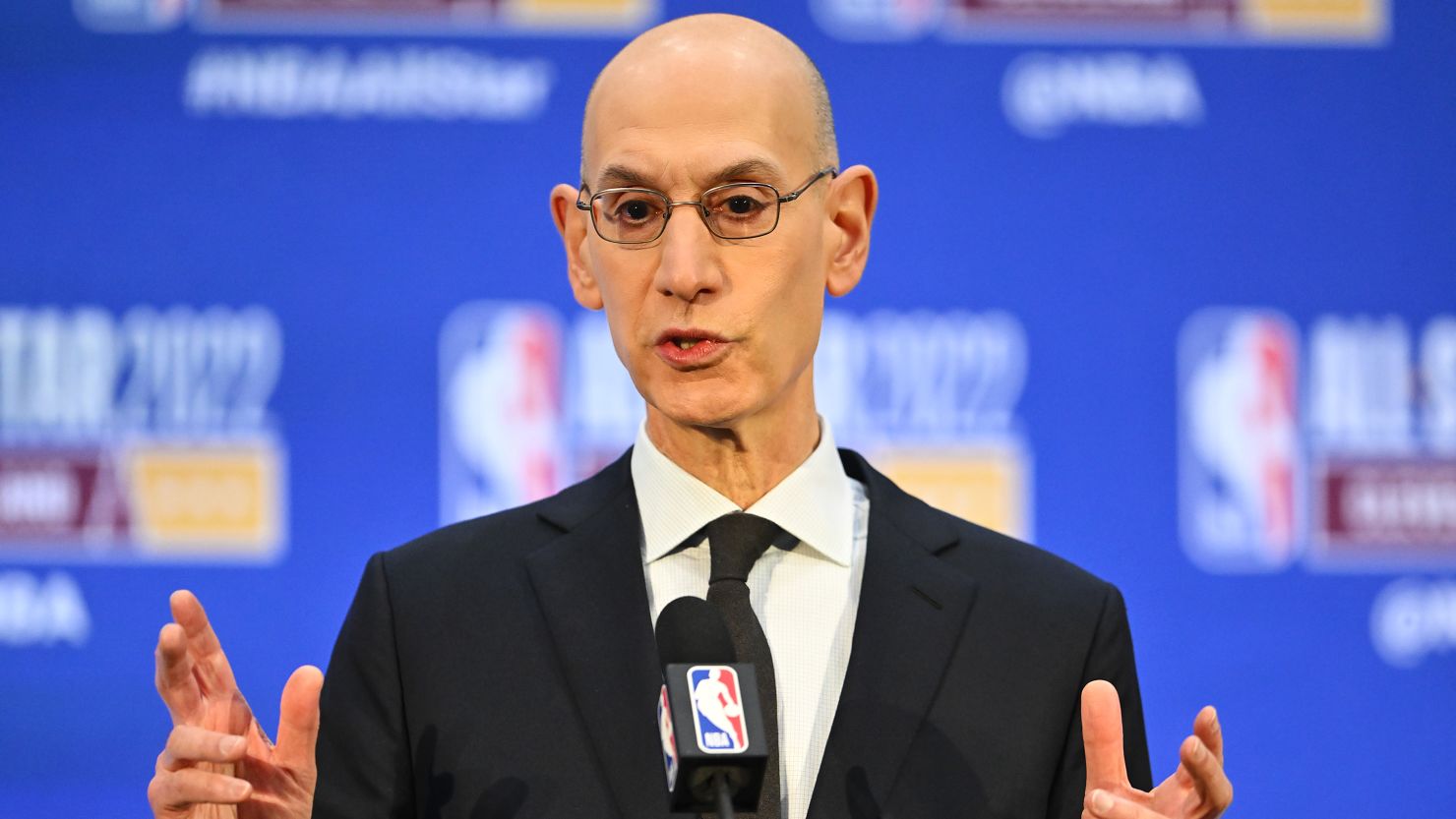
Adam Silver’s NBA: A Decade of Vision, Challenges, and Global Transformation
In a league defined by stars, few non-players have shaped the modern NBA more than Commissioner Adam Silver. Since taking over from David Stern in 2014, Silver has steered the league through a period of profound change—technological disruption, global expansion, pandemic-era uncertainty, and rising player empowerment.
Now in his second decade as commissioner, Silver’s leadership continues to be defined by a delicate balancing act: preserving the NBA’s traditions while pushing it into new territory. But as the league confronts new challenges—media shifts, labor negotiations, and global market saturation—Silver’s next moves could define the NBA’s future as much as his first.
I. The First Moves: Defining Moments Early in His Tenure
Adam Silver’s defining moment came just months into the job.
In April 2014, he issued a lifetime ban to then-Los Angeles Clippers owner Donald Sterling after recordings of racist comments surfaced. The decision, praised almost universally, cemented Silver’s identity as a progressive and decisive leader—one who would not shy away from controversy in defense of league values.
It set the tone: the NBA under Silver would be morally responsive, socially conscious, and player-aligned—qualities that have continued to define his approach.
II. Navigating the Pandemic: The Orlando Bubble and Operational Genius
When COVID-19 shut down the NBA in March 2020, few expected the league to return that season. Yet under Silver’s direction, the league launched the “Orlando Bubble”—a multi-month, tightly controlled environment that allowed the NBA to complete the 2019–20 season safely.
-
Zero COVID cases.
-
Full playoff format.
-
Historic TV moments, including LeBron James’ fourth title.
The bubble wasn’t just a health triumph—it was an operational and logistical masterpiece, widely regarded as a case study in crisis leadership.
III. The Player Empowerment Era: A Double-Edged Sword
Silver’s tenure has coincided with an era where star players hold unprecedented influence. Superstars now routinely request trades while under contract, dictate rosters, and even influence coaching decisions.
While Silver has long been praised for embracing this player-first model, critics argue that it has led to instability:
-
Trade demands (e.g., James Harden, Kevin Durant, Damian Lillard) have disrupted team cohesion.
-
Load management remains a thorny issue, with fans often left disappointed and networks pressured.
Silver’s approach—favoring dialogue over punishment—has fostered trust with the NBPA, but may soon face pushback from ownership circles calling for stronger governance mechanisms in the next CBA.
IV. Business of Basketball: Revenue, Ratings, and the Next Broadcast War
Under Silver, the NBA’s business side has flourished:
-
League revenue surpassed $13 billion in 2024.
-
Franchise valuations skyrocketed, with several teams now worth over $5 billion.
-
Global partnerships (especially with China, Africa, and the Middle East) have expanded the NBA’s reach to over 200 countries.
However, the traditional media model is faltering. With cord-cutting accelerating, Silver’s next big challenge is negotiating a transformative media rights deal set to begin in 2026.
Insiders say the NBA is exploring:
-
Streaming-first packages (Amazon, Apple, Netflix in talks)
-
Microtransactions and gamified viewing
-
International exclusives, including localized commentary and region-specific rights
This deal could be worth over $75 billion, and will shape how fans consume the NBA for the next decade.
V. Legacy and Criticism: A Commissioner Not Without Flaws
While Silver is largely admired, he is not immune to criticism.
-
China controversy (2019): Silver’s support of Daryl Morey’s free speech during the Hong Kong tweet saga was applauded in the U.S., but strained NBA–China relations, costing the league an estimated $400 million.
-
Load Management & Fan Experience: Ongoing complaints about star absences and meaningless regular-season games remain unsolved.
-
All-Star Weekend & In-Season Tournament: Attempts to revamp these events have yielded mixed results.
Still, most league insiders agree: Silver’s diplomacy, communication skills, and willingness to adapt have preserved league unity in ways other sports can’t match.
VI. The Road Ahead: Expansion, CBA, and Global Identity
Silver has signaled that NBA expansion is coming—likely adding teams in Las Vegas and Seattle. This would be a crowning achievement for a commissioner who inherited a 30-team league and could pass on a 32-team global empire.
Key questions for his next term:
-
Can the NBA solve the load management crisis?
-
Will a new media rights deal keep pace with NFL and global streaming trends?
-
Can the league maintain player freedom without sacrificing structural integrity?
-
And most of all—how will the NBA evolve in a post-American sports landscape, where international talent and markets increasingly shape the narrative?
Adam Silver is not just a commissioner—he is the architect of the NBA’s modern identity. In an era of political volatility, digital disruption, and cultural shifts, he has been a stabilizing force with a global vision.
His work is far from over. But his legacy is already written in the way the NBA plays, earns, connects, and stands for something bigger than basketball.